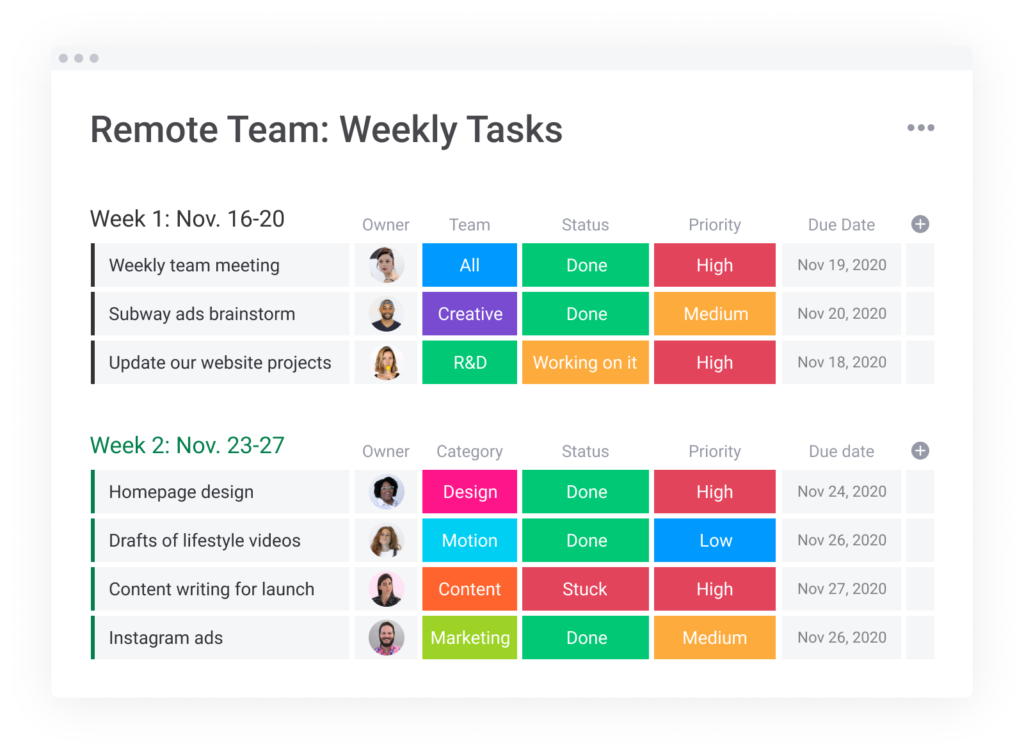For the past few months, social distancing regulations have forced companies, both big and small, to work remotely and establish a brand new WFH culture. And luckily, modern technology has gifted us with an extensive array of virtual communication channels to make this all possible.
However, as fortunate as we are, many are finding the transition from face-to-face to remote communication to be quite a challenge.
The surprising truth is that a lot of the problems found in a remote work environment don’t stem from a lack of communication but actually an excess of it.
But before we dive into challenges and solutions of virtual communication, let’s give it a definition.
What is virtual communication?
Virtual or remote communication is any form of communication that uses technology to reach people who are not physically present in front of us. This can be anything from the video conferences, phone calls, chats, and all the way back to the dark ages of faxes and pagers.
Virtual communication has always been around, but in today’s world of social distancing, many professionals are experiencing a steep (and oftentimes painful) learning curve when solely relying on it in their day-to-day lives.
The challenge
While many worried about the lack of communication in a remote work environment, the problem that we’ve seen arise in the past few months is actually an overwhelming overload of virtual meetings and what is now being called ‘video conference fatigue’.
If you’re also experiencing this – not to worry. There’s still plenty of time to swing the pendulum back and strike the right communication balance for your team.
The solutions
The Wundamail Work from Home 2020 Report concluded that over half of its participants wish they had fewer virtual meetings in order to achieve longer stretches of uninterrupted work.
Here are 5 ways your remote team can achieve this:
1. Use different virtual communication tools
There’s a time and place for everything, and that goes for all of your remote communication tools as well. You can streamline your remote communication by designating specific channels for different types of communication.
While video and phone meetings are necessary on certain occasions, there are countless situations in which less disruptive forms of virtual communication will do just fine.
Got a quick question? Forgot to mention something in the meeting? That’s what chat applications are for. From Slack to Google Hangouts, there is no lack of user-friendly chat platforms to help your team stay connected.
And remember emails? Still a completely acceptable mode of communication, emails are great for longer, more detailed memos that can often replace an unnecessary meeting.
2. Hone your remote communication skills
Just like face-to-face communication, remote communication requires a certain set of interpersonal and strategic skills. These skills can help you reduce long-winded virtual meetings or at least make them more effective.
Examples of virtual communication skills include:
- Using the right channels at the right time
- Reaching out proactively when needed
- Being prepared and focused during video meetings
- Replying to messages within a reasonable amount of time
Virtual communications etiquette won’t happen overnight– so be forgiving. The best way to get your entire team on board is by setting the tone and leading by example.
3. Create visible accountability with in-context team communication
It’s entirely possible to keep the members of your team on track and accountable without hourly meetings and remote micromanagement.
To walk that fine line between over-communication and complete disarray, the best solution is to use work operating systems, like monday.com. The organized project boards allow the employees to collaborate on cross-functional projects without disturbing each other’s workflow.
Getting a bird’s eye view of what’s going on in your team at all times allows you to avoid constant check-in meetings that are harmful to both productivity and culture.
4. Identify the advantages and disadvantages of remote communication
Too many virtual meetings are often caused by an attempt to replicate the communication experience of a physical workspace. Understanding the advantages and disadvantages of virtual communication from the get-go will help you build a more informed strategy.
Here are a few examples:
Advantages
- Flexibility – Time zones and locations are no longer a problem. Virtual communication allows us to reach team members anytime and anywhere.
- Intent – When working remotely, all interactions are intentional and premeditated, avoiding office politics and distracting chatter that usually happen in a physical workspace.
- Records – Unlike impromptu hallway discussions, virtual communication keeps all interactions on the record so you can always go back to see if you missed something.
Disadvantages
- Non-verbal indicators – Even in video chats, body language, and tone of voice don’t always fully translate. We need to recognize this and make the extra effort to verbalize your feelings.
- No employee bonding – It’s difficult to build a rapport, especially with new employees, without coffee breaks and water cooler banter. This can be solved by opening chat groups for the sole purpose of casual conversation, such as food pics, gifs, and, of course, cat memes.
- Technical issues – Even in today’s day and age, we are susceptible to poor service, malfunctioning hardware, and countless more issues. It’s important to both be prepared and forgiving during these instances.
5. Keep adjusting your strategy
The keyword when it comes to remote and virtual communication is ‘adjustment’. Once you have an initial strategy in place and avoid turning to virtual meetings as a default, you’ll be able to adopt the best practices for your team and for each member in it. Working with tried and true Work OS templates, like the one below, is a great way to learn from others and continuously tweak your flow.

Use remote team tasks template
Improving virtual communication is an ever-evolving process so be sure to keep an open mind and welcome suggestions from other team members.


